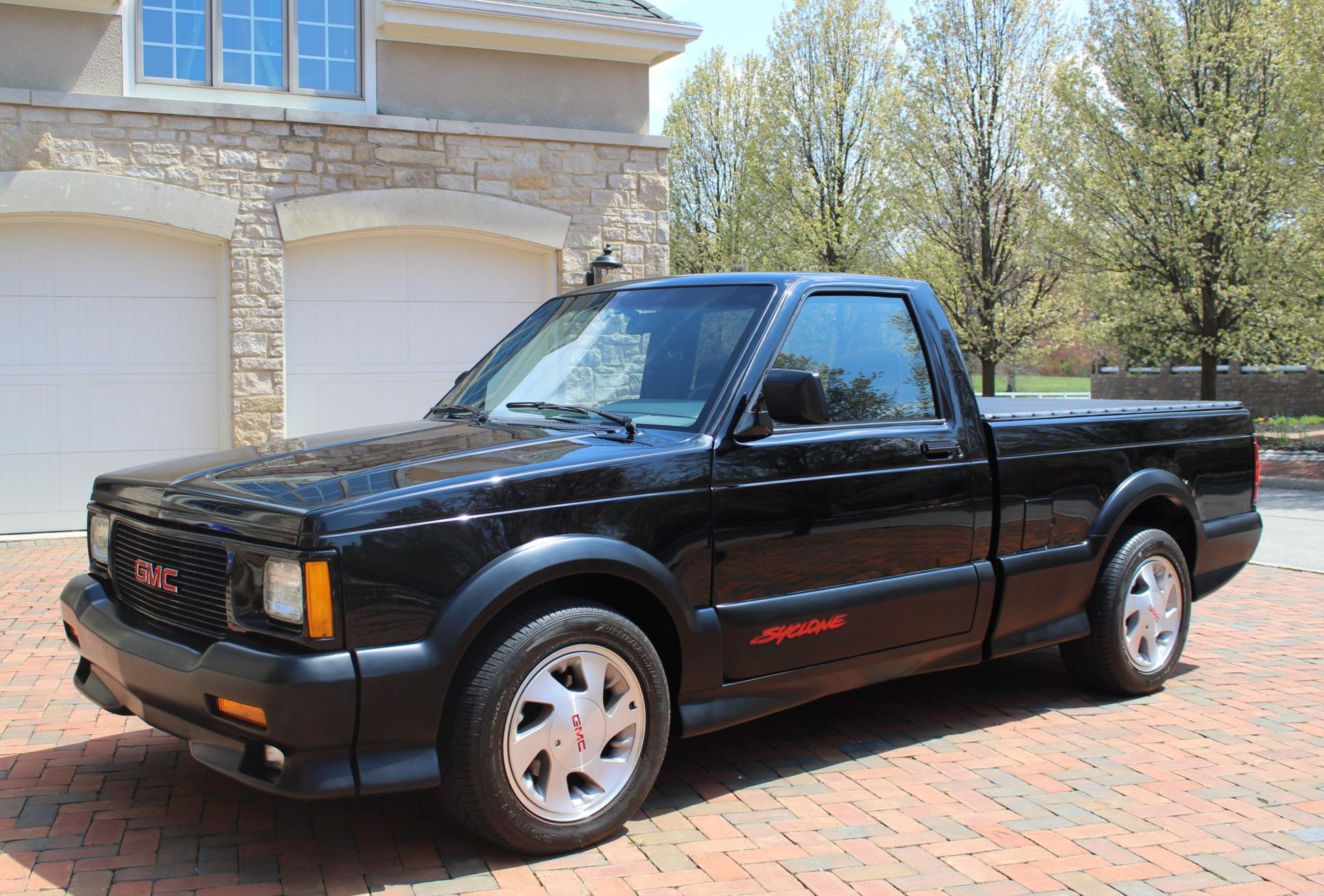Will The Ford Maverick Lobo Reboot The Street Truck?
The factory-built street performance truck grew strong in the 1990s, peaked in the early 2000s, then all but disappeared. But now, in 2025, Ford has dropped the Maverick Lobo on the market. The Lobo uses Ford’s 2.0-liter EcoBoost engine making 250 horsepower, sits lower on tuned suspension, uses the twin-clutch rear drive unit from the Bronco Sport, the steering from the European Kuga, the dual-piston brake calipers from the Fiesta ST, adds a set of paddle shifters to a seven-speed automatic transmission, and includes Lobo mode for closed course antics
The Lobo also reminds everyone old enough to remember that the GMC Syclone existed and, arguably, kicked off the performance street truck scene. The Syclone was a small truck that appeared in 1991 with a turbocharged 4.3-liter V6 engine making 280 horsepower and using all-wheel-drive to get the power down. It was so fast for its time that Car & Driver dragged raced it with a Ferrari 348ts, and the Syclone won.
The GMC Syclone Comparison
It seems obvious to compare the Lobo with the Syclone. However, it’s worth remembering the Syclone came from a time when racing from traffic light to traffic light in a straight line was still important to American tuners. Still, it’s a little disappointing that the Maverick is down on horsepower in comparison to a comparable 1991 street truck. The Syclone could hit 60 mph in 4.8 seconds; the Lobo takes a little over five seconds, which is not impressive in 2025. The however that’s coming, though, is a big one.

Related
Weekly Treasure: 1991 GMC Syclone
This one model year gem can be yours.
Ford realized a long time ago that just being able to drive fast in a straight line is boring. That’s why the Mustang is so damn good now and registers as one of the best global sports cars you can buy. Ford told us when we were driving the Lobo that some of its customers wanted to, or were, tracking their Lobos, which raised a single eyebrow from this writer. Then, they set us free on an autocross course in the Lobo, and we found ourselves grinning as we lapped. The Syclone also had a limited slip diff, but you would still not want to send it into the corner with enthusiasm. The Lobo adds torque vectoring to the mix, and you very much want to send it into a corner.
Street Trucks Aren’t Just About Performance
If street trucks were just about performance, they would have disappeared in the mid-1990s, never to be spoken of again. If you want a pure-performance vehicle, a truck is about the worst possible vessel. There are two extra ingredients, though – practicality and style. A truck bed is always going to be practical, and a truck is an excellent canvas for people to imprint their style upon. We’re expecting to start seeing a lot of these around major cities with varying levels of cool wraps. If that starts happening, the aftermarket will follow with a plethora of body kits and the Lobo will start to spread.
But The Performance Thing Is Important
We wouldn’t be surprised if the Lobo proves popular. How much more power the stock internals can take, we don’t know but we’ve seen this version of the 2.0-liter taken up to 300 horsepower and previous iterations have been taken over 350 with an upgraded turbo and a tune. A 350+ hp factory model would grab headlines and hearts, much like the 280-hp Syclone did in 1991. This time, with all-wheel-drive to lay that power down properly off the line. Of course, tuners are going to tune, and there are already tunes and upgrades for this generation of the 2.0 EcoBoost engine targeting the Maverick.
But Really, Street Trucks Again? And This Is Small
We suspect there are two things at play here. First, America seems to be realizing that full-size trucks aren’t always necessary and there is something cool about a small truck that doesn’t need debt up to the eyeballs to buy new, then keep full of gas, while still having all the utility people need on a week-to-week basis.
The Lobo’s starting price is $35,255, which isn’t steep when you look at hot hatches and not out of reach for a lot of people. Full-sized street performance trucks, like they did in the 1990s and 2000s, will price a lot of people out. That doesn’t rule out mid-and full-size street trucks making a comeback, and it would be a nice change from the epidemic of fragile-ego-led lifted trucks we see on the road in the US, but it’s easier to make something small go fast and handle well. Then, how much use are people going to make of a full-sized truck bed on lowered suspension and thin tires?
Conclusion: The Maverick Lobo Makes An Excellent Case For The Return Of The Street Truck
The Lobo sacrifices the work truck’s ability to bump off the road onto a muddy work site or explore some trails over the weekend. It’s quick, but it’s not fast, much like some of the best hot hatches we’ve driven. However, a great hot hatch will handle better and lay down faster lap times. Still, the Lobo is a hoot to drive fast, has the practicality of a truck bed, and looks cool. Those are the three main ingredients of a great street truck right there, but it’s also fuel-efficient and not crazy expensive.
The ideal timeline here is that other automakers take note, the Maverick Lobo gets a power upgrade, and Ford starts eyeing the Ranger for a Lobo version. As another flavor of enthusiast vehicles on the street, we’re all for the return of the street truck. We just hope it sticks this time.
Sources: Road & Track
